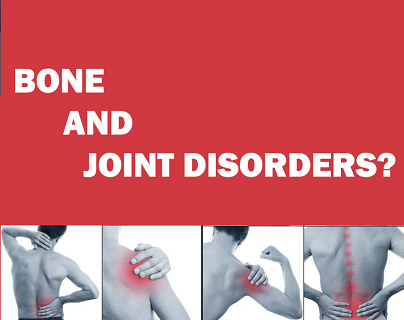
- Any violent movement, such as jump, fall or knock, may cause injury to the skeleton.
- There are various types of injuries or disorders related to skeleton:
- Sprain
- Dislocation
- Fracture
- Arthritis
- Slipped disc
- Osteoporosis
- Bursitis etc.
- Sprain:
- Sprain refers to the injury to a joint capsule, typically involving a stretching or tearing of tendons or ligaments.
- Both ligaments and tendons have poor regenerative power than bone, and once stretched often remain weak.
- Although considered a minor disorder, sprain sometimes can be chronic.
- Dislocation:
- It is the displacement of bones from their normal positions at a joint.
- For instance, slipping out of the ball of one bone from the socket of another bone into which it is fitted is a dislocation.
- It is accompanied by pulling or even tearing of the ligaments.
- Dislocation also tends to become chronic.
- Fracture:
- Fracture is the breaking of a bone.
- It occurs rarely in children as their bones have a large quantity of organic matter and are, therefore, comparatively flexible and less likely to break.
- With advancing age, mineral matter (calcium phosphate) deposited in the bones slowly replaces the organic matter and makes the bones hard and brittle.
- Bone fracture are of many types:
- Green-stick fracture: It is merely a crack and the bone is partly intact.
- Simple fracture: Bone breaks completely into two parts which remain close to each other.
- Comminuted fracture: Bone breaks into more than two pieces.
- Compound fracture: Bone breaks completely but a fragment pierces through the skin.
- Evulsive fracture: A small piece breaks off fully from a bone but remains attached to the ligament.
- Arthritis:
- Arthritis is a condition where the joints are swollen or inflamed.
- It is more common in elderly people.
- Its common symptoms are pain and stiffness in the joints.
- It has many forms, but three more common forms are given below:
- Osteroarthritis or Degenerative arthritis:
- In this form, the secretion of the lubricating synovial fluid at the joints stops.
- The smooth cartilage covering the ends of the bones wears out due to years of use and is replaced by uneven bony spurs.
- The joint swell with painful movements leading to impaired and diminished function.
- Such stiffness of fixation of joint is called ankylosis.
- It is more or less permanent and common in old people, mainly affecting weight bearing joints.
- Rheumatoid arthritis:
- It is a chronic condition in which synovial membranes of many joints are inflamed simultaneously.
- It usually starts in the small joints in the hand and progresses eventually eventually resulting in crippling deformities.
- There may be other manifestations like fever, anemia, weight loss and morning stiffness.
- Rheumatoid arthritis also involves the erosion of joints which normally starts at the age of 20-40 years, but may begin at any age.
- Women are more affected than men. Rest and exercise under medical advice may relieve pain.
- Gout:
- It is a disorder caused by the excess of uric acid in blood resulting from purine metabolism, occurring especially in men.
- The crystals of sodium urate are deposited in the synovial joints, which gives rise to a severe arthritis.
- Gout generally affects one or two joints only, mostly affecting the great toe.
- The affected joint becomes red and tender making movement painful and difficult particularly at night.
- Since, occurrence of gout is related to diet, people suffering from gout should avoid meat and purine containing food items.
- Osteroarthritis or Degenerative arthritis:
- Slipped disc:
- It is the displacement of vertebrae and the intervertebral fibrocartilage disc from their normal position.
- Mechanical injury or defects of ligaments holding the vertebrae together may result in slipped disc.
- Osteoporosis:
- Osteoporosis is the reduction in bone tissue mass causing weakness of skeletal strength.
- It results from excessive loss of calcium and phosphorus from the bones.
- There is relatively greater loss of trabecular bone than compact bone which leads to vertical compression, or crush fracture of the vertebrae and fracture of the neck of the femur, all with considerable trabecular bone.
- Causes:
- Osteoporosis occurs in postmenopausal women and elderly men. It may result from defective intestinal calcium absorption and menopause.
- Possible environmental factors include smoking, excessive drinking and decreased physical exercise.
- Symptoms:
- Pain in the bone; particularly the back
- Vertebral crush usually in the weight-bearing vertebrae (thoracic-8 and below).
- Prevention:
- Supplementary calcium and regular physical exercise in high-risk people.
- Estrogen replacement therapy in postmenopausal women.
- Bursitis:
- It is the inflammation of the bursae present in the joints.
- It is caused by injury or constant pressure on a single joint for a long time.